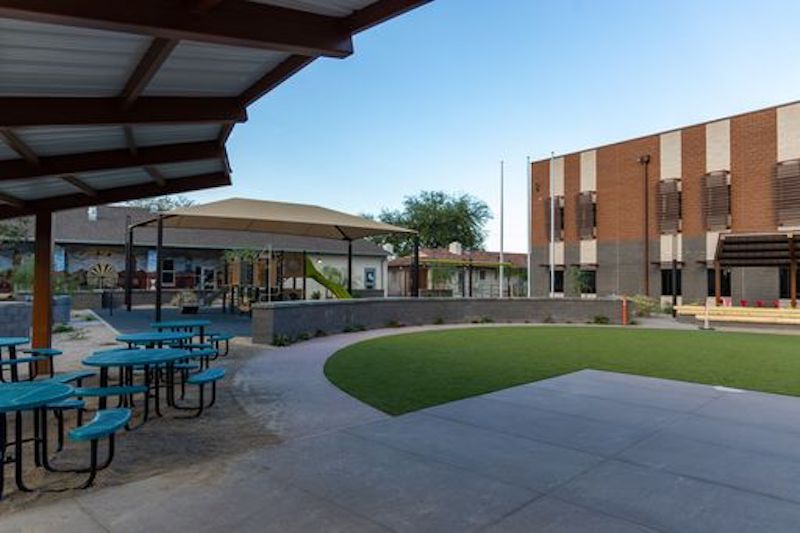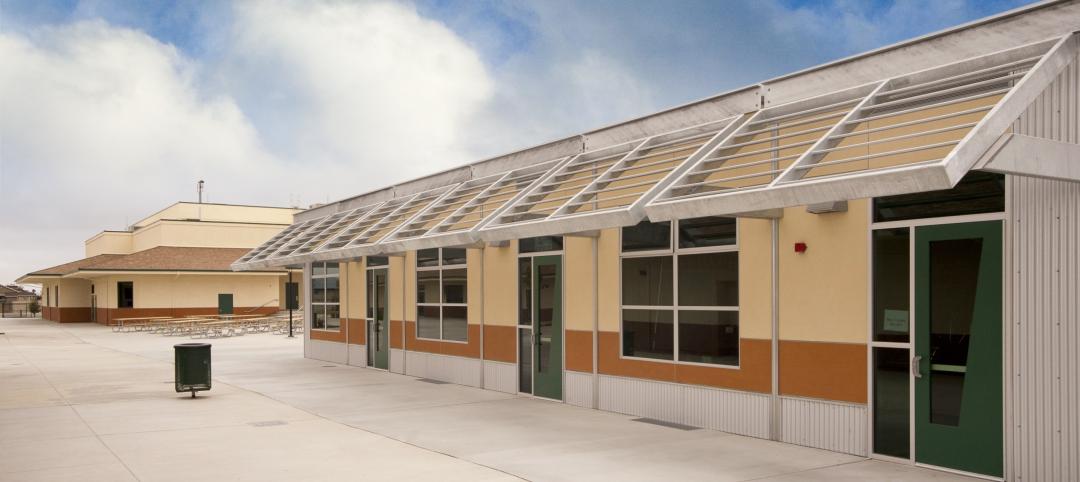Construction on the new Blackwater Community School, a two-story structure on the Gila River Indian Community, located southeast of Phoenix, Ariz., was completed on August 31. The school serves pre-school, the Family And Child Education Program (F.A.C.E.), and a K-5 grade school.
The two-year-long build on the 7.43-acre campus was in conjunction with Rosendin, the nation’s largest employee-owned electrical contracting company, along with Gilbane Building Company and design partner Breckenridge Group.
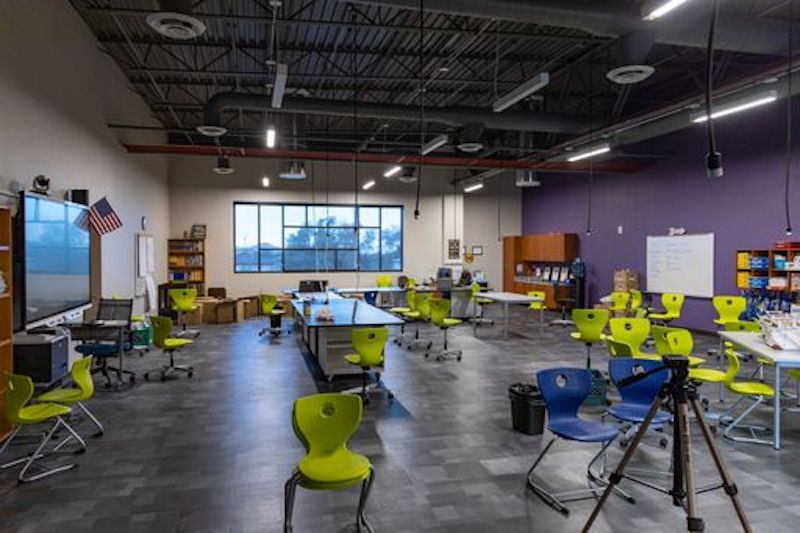
The $25 million replacement campus incorporates culturally significant artwork throughout the two-story classroom building, media center, multipurpose building, and cafeteria. The Blackwater Community School Culture Committee provided the insight for the cultural art in partnership and with the approval of the Blackwater Community School Board. Rosendin’s team worked on lighting, playground areas, basketball courts, sports fields, and reading patios.
The Blackwater Community School serves two distinct tribes: the Akimel O’Otham, who can trace their ancestry to the Hohokam; and the Pee Posh, who come from Yuma ancestry.
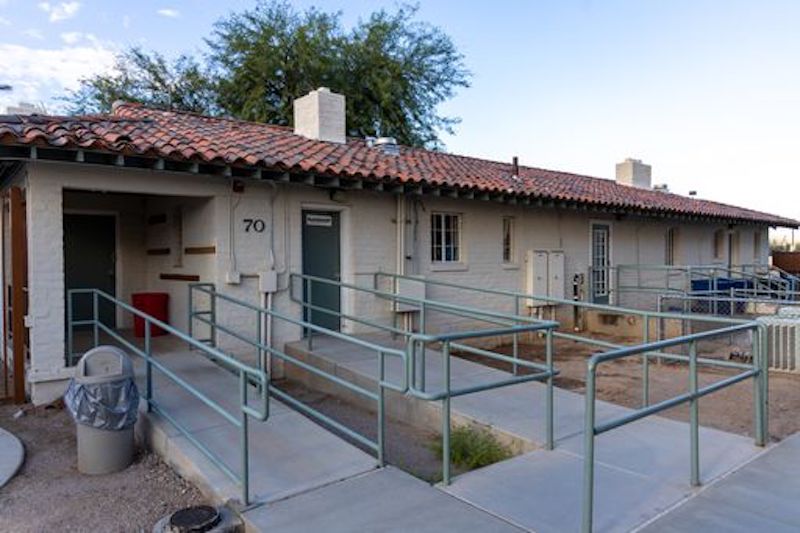
“The Blackwater Community School is the heart of the community and celebrates the Gila River Indian Community’s heritage throughout the year,” said Jagdish (Jack) Sharma, Principal of Blackwater Community School. “Agriculture is at the heart of the Akimel O’Otham culture. Our educators take pride in our quality educational practices and the presences of tradition’s. This is the reason why traditional symbols of the culture are placed throughout the new campus.”
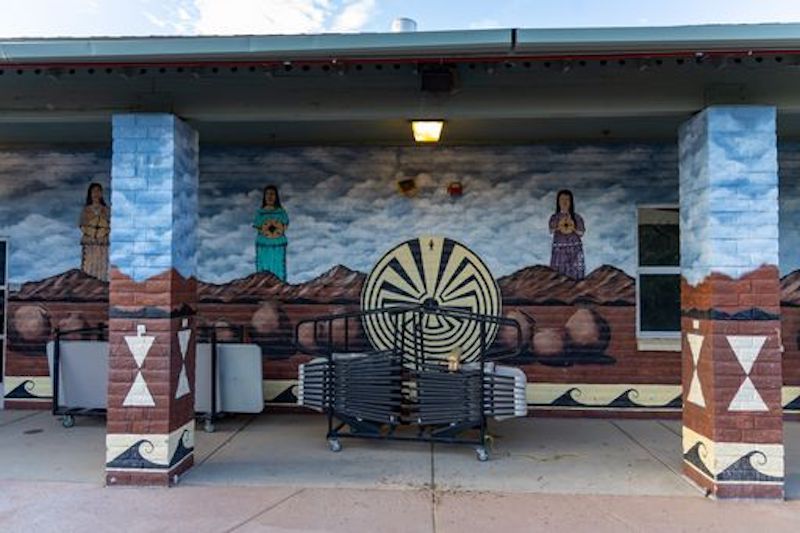
The Hohokam made contributions to the earliest forms of technology in the Southwest with the introduction of agriculture, irrigation canals, and extensive trade networks. Exterior and Internal murals throughout the campus depict those contributions with scenes of crop harvesting, desert landscapes, and petroglyphic symbols like the Man in the Maze, or Se:he. A shade structure has been built with metal shaped to look like cactus ribs, a material the Akimel O’Otham would use to build communal gathering space ramadas.
“There is a blue and pink mural in one of the hallways depicting the desert at night," said Sharma, speaking to the Blackwater Community School Culture Committee’s interpretation of the artwork. "Blackwater’s name comes from the standing water getting dark with night. In the glow of the moon, fish would appear. In the moon, there are two flute players, a reference to 'Man of the Maze.' There are murals like this all over campus that reflect our student’s culture enriching their overall learning experience,”
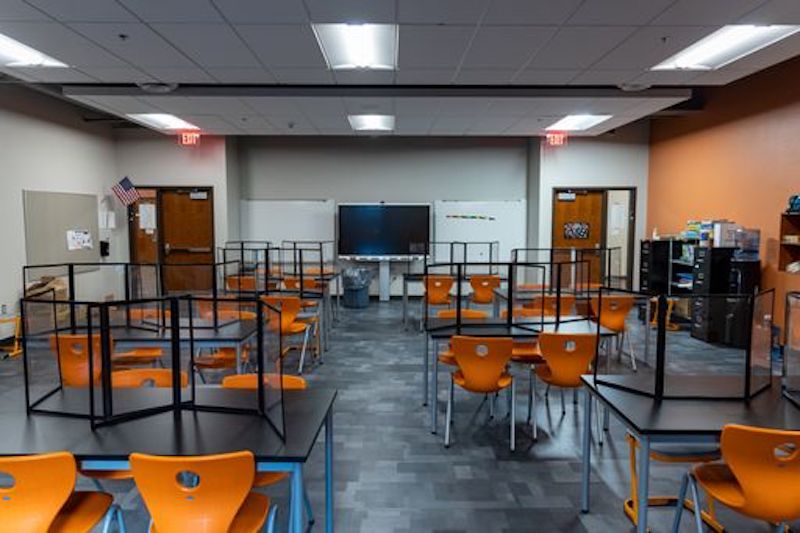
The school was originally built in 1939 and in 2018, received through other different funding sources, and Gila River Community Council, Bureau of Indian Affairs (BIA), monies for a replacement school.
“Rosendin is proud to have built the new elementary school in the Gila River Indian Community to give students the very best environment to learn and grow,” said Ben Miller, Rosendin Division Manager. “The school will serve as the hub of the larger community and support family education and culture in the local area."
The two-year campus build required an aggressive phasing schedule to implement construction while school was in session. Parts of the project were scheduled over winter and summer breaks to mitigate disruption to students.
“Blackwater Community School will serve as a pivotal gathering and educational spot for children and adults on the Gila River Indian Community," said Jeff Keck, Senior Project Executive, Gilbane Building Company. Gilbane is proud to work with Rosendin and other trade partners to have safely built a new campus to support this community’s families, cultures and traditions,”
ABOUT ROSENDIN
Rosendin, headquartered in San Jose, Calif., is the largest employee-owned electrical contractor in the United States, employing over 7,000, with revenues of $2 billion. Established in 1919, Rosendin remains has built quality electrical and communications installations for morethan a century. More information at: www.rosendin.com
ABOUT GILBANE BUILDING COMPANY
Gilbane provides a full slate of construction and facilities-related services – from pre-construction planning and integrated consulting capabilities to comprehensive construction management, general contracting, design-build, and facility management services. Founded in 1870 and still a privately held, family-owned company, Gilbane has more than 45 office locations worldwide. More information at: www.gilbaneco.com.
Related Stories
| May 18, 2011
One of Delaware’s largest high schools seeks LEED for Schools designation
The $82 million, 280,000-sf Dover (Del.) High School will have capacity for 1,800 students and feature a 900-seat theater, a 2,500-seat gymnasium, and a 5,000-seat football stadium.
| May 17, 2011
Sustainability tops the syllabus at net-zero energy school in Texas
Texas-based firm Corgan designed the 152,200-sf Lady Bird Johnson Middle School in Irving, Texas, with the goal of creating the largest net-zero educational facility in the nation, and the first in the state. The facility is expected to use 50% less energy than a standard school.
| May 16, 2011
USGBC and AIA unveil report for greening K-12 schools
The U.S. Green Building Council and the American Institute of Architects unveiled "Local Leaders in Sustainability: A Special Report from Sundance," which outlines a five-point national action plan that mayors and local leaders can use as a framework to develop and implement green schools initiatives.
| May 10, 2011
Greenest buildings: K-12 and commercial markets
Can you name the nation’s greenest K-12 school? How about the greenest commercial building? If you drew a blank, don’t worry because our friends at EarthTechling have all the information on those two projects. Check out the Hawai’i Preparatory Academy’s Energy Lab on the Big Island and Cascadia Green Building Council’s new Seattle headquarters.
| Mar 15, 2011
Passive Strategies for Building Healthy Schools, An AIA/CES Discovery Course
With the downturn in the economy and the crash in residential property values, school districts across the country that depend primarily on property tax revenue are struggling to make ends meet, while fulfilling the demand for classrooms and other facilities.
| Feb 23, 2011
“School of Tomorrow” student design competition winners selected
The American Institute of Architecture Students (AIAS) and Kawneer Company, Inc. announced the winners of the “Schools of Tomorrow” student design competition. The Kawneer-sponsored competition, now in its fifth year, challenged students to learn about building materials, specifically architectural aluminum building products and systems in the design of a modern and creative school for students ranging from kindergarten to sixth grade. Ball State University’s Susan Butts was awarded first place and $2,500 for “Propel Elementary School.”
| Feb 15, 2011
LAUSD commissions innovative prefab prototypes for future building
The LA Unified School District, under the leadership of a new facilities director, reversed course regarding prototypes for its new schools and engaged architects to create compelling kit-of-parts schemes that are largely prefabricated.
| Feb 9, 2011
Gen7 eco-friendly modular classrooms are first to be CHPS verified
The first-ever Gen7 green classrooms, installed at Bolsa Knolls Middle School in Salinas, California, have become the nation's first modular classrooms to receive Collaborative for High Performance Schools (CHPS) Verified recognition for New School Construction. They are only the second school in California to successfully complete the CHPS Verified review process.
| Dec 17, 2010
Alaskan village school gets a new home
Ayagina’ar Elitnaurvik, a new K-12 school serving the Lower Kuskikwim School District, is now open in Kongiganak, a remote Alaskan village of less than 400 residents. The 34,000-sf, 12-classroom facility replaces one that was threatened by river erosion.
| Dec 6, 2010
Honeywell survey
Rising energy costs and a tough economic climate have forced the nation’s school districts to defer facility maintenance and delay construction projects, but they have also encouraged districts to pursue green initiatives, according to Honeywell’s second annual “School Energy and Environment Survey.”


